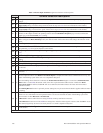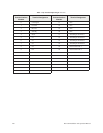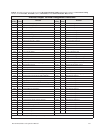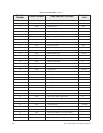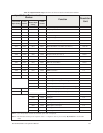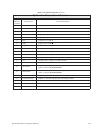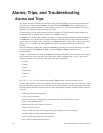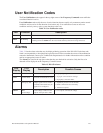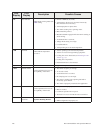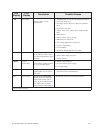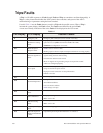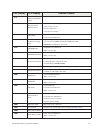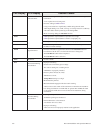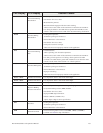246 H9 ASD Installation and Operation Manual
Alarms, Trips, and Troubleshooting
Alarms and Trips
This section lists the available user-notification codes of the EOI display and provides information that
assists the user in the event that a Fault is incurred. The User Notification codes are displayed as an
indication that a system function or system condition is active (i.e., ATN, DB, and DBON). The code is
displayed on the EOI for the duration of the activation.
If a user setting or an H9 ASD parameter has been exceeded, or if a data transfer function produces an
unexpected result, a condition that is referred to as a Fault is incurred.
An Alarm is an indication that a Fault is imminent if existing operating conditions continue unchanged.
An Alarm may be associated with an output terminal to notify the operator of the condition remotely,
close a contact, or engage a brake. At the least, an Alarm will cause an alarm code to appear on the EOI
display. Table 13 lists the 16 possible Alarm codes that may be displayed during operation of the
H9 ASD.
In the event that the condition that caused the Alarm does not return to its normal operating level within a
specified time, the ASD Faults and a Trip is incurred (Fault and Trip are sometimes used
interchangeably).
A Trip is a safety feature (the result of a Fault) that disables the H9 ASD system and removes the 3-phase
power to the motor in the event that a subsystem of the ASD is malfunctioning, or one or more of the
variables listed below exceeds its normal range (time and/or magnitude).
• Current,
• Voltage,
•Speed,
• Temperature,
• Torque, or
• Load.
See Table 14 on pg. 250 for a listing of the potential Trips and the associated probable causes.
The operating conditions at the time of the trip may be used to help determine the cause of the trip. Listed
below are operating conditions that may be used to assist the operator in correcting the problem or that the
H9 ASD operator should be prepared to discuss when contacting the Toshiba Customer Support Center for
assistance.
• What trip information is displayed?
• Is this a new installation?
• Has the system ever worked properly and what are the recent modifications (if any)?
• What is the ASD/Motor size?
• What is the CPU version and revision level?
• What is the EOI version?
• Does the ASD trip when accelerating, running, decelerating, or when not running?
• Does the ASD reach the commanded frequency?
• Does the ASD trip without the motor attached?
• Does ASD trip with an unloaded motor?



